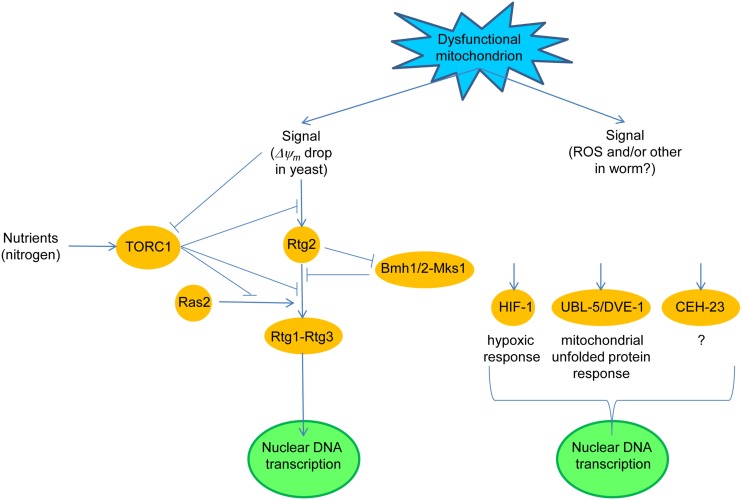Figure 1.
Dysfunctional mitochondria trigger a retrograde response in yeast and in round worms. In yeast, a drop in mitochondrial membrane potential (ΔΨm) initiates retrograde signaling through Rtg2, by preventing the Mks1-Bmh1/2 complex from inhibiting the partial dephosphorylation of Rtg3 in the Rtg1–Rtg3 retrograde transcription factor which is stimulated by Rtg2. Rtg1–Rtg3 translocates from the cytoplasm to the nucleus where it activates the expression of retrograde response target genes. The nutrient-responsive, target of rapamycin (TOR) complex 1 (TORC1) blocks the retrograde response both upstream and downstream of Rtg2. TORC1 also suppresses the stimulatory effect of Ras2 on retrograde signaling. In the worm, a signal(s) elicited by dysfunctional mitochondria activate anyone of at least three retrograde signaling pathways defined by the transcription factor which is activated. The transcription factor can be HIF-1, activated by reactive oxygen species (ROS), UBL-5 and DEV-1, or the putative transcription factor CEH-23.

